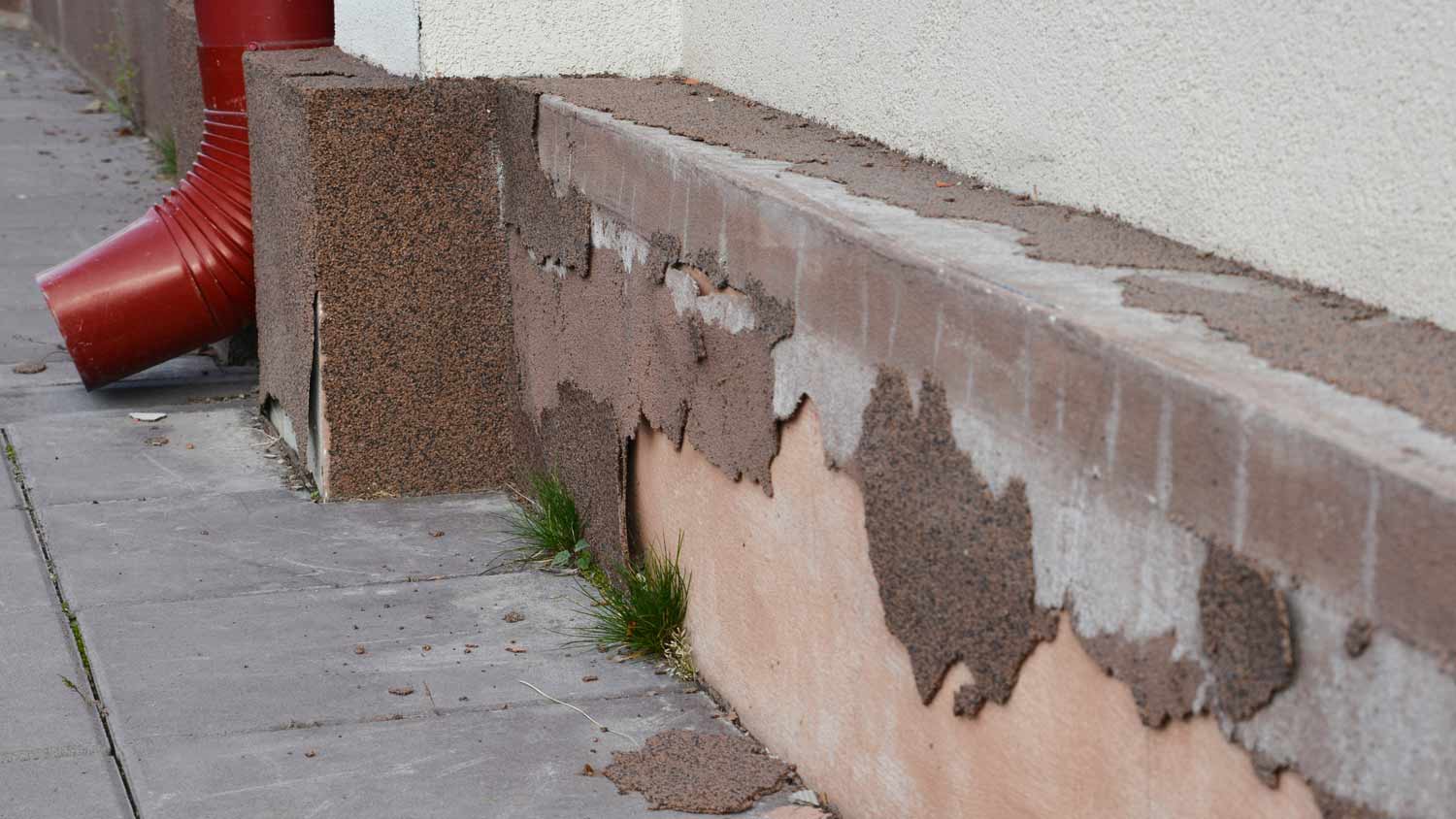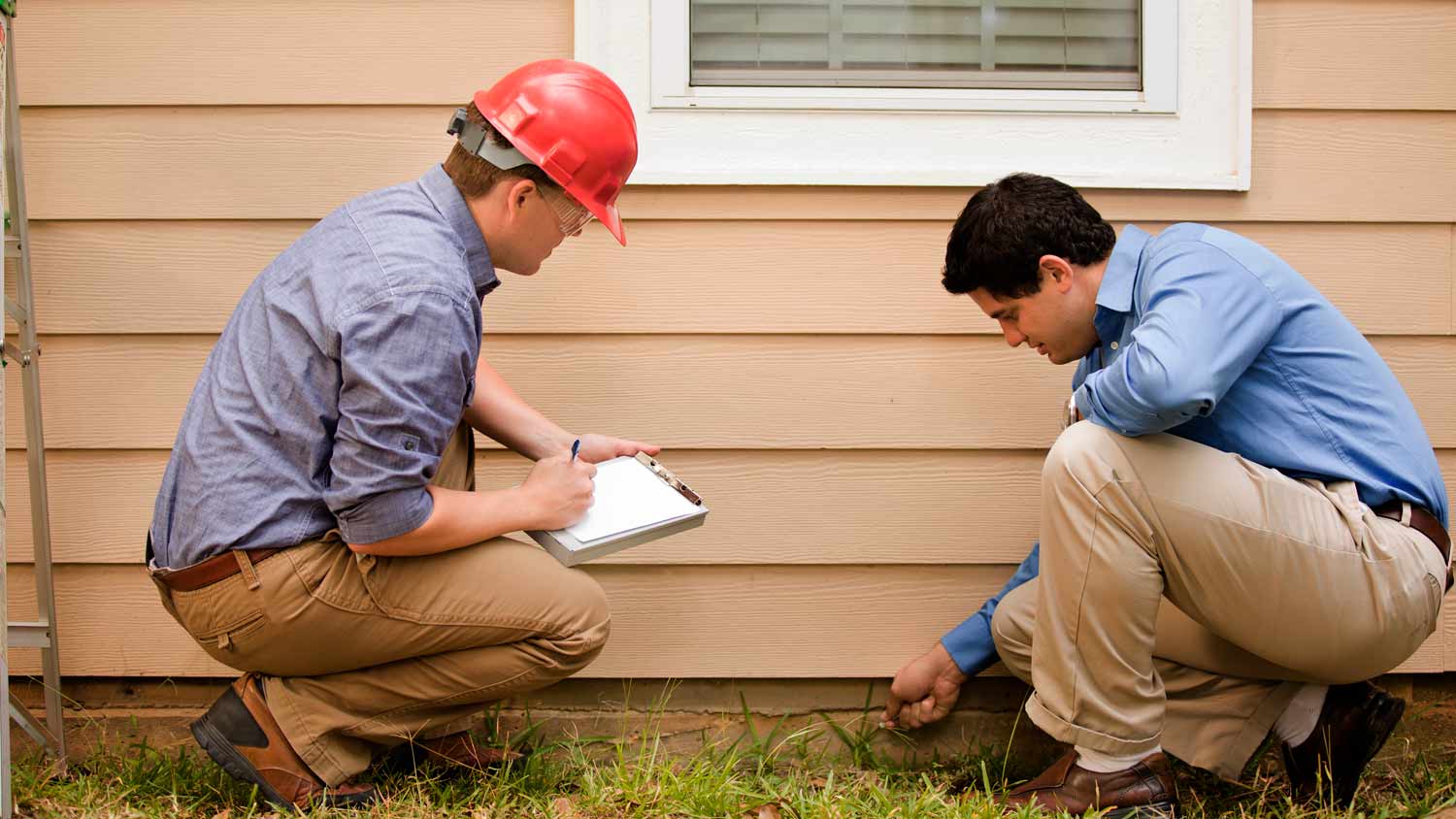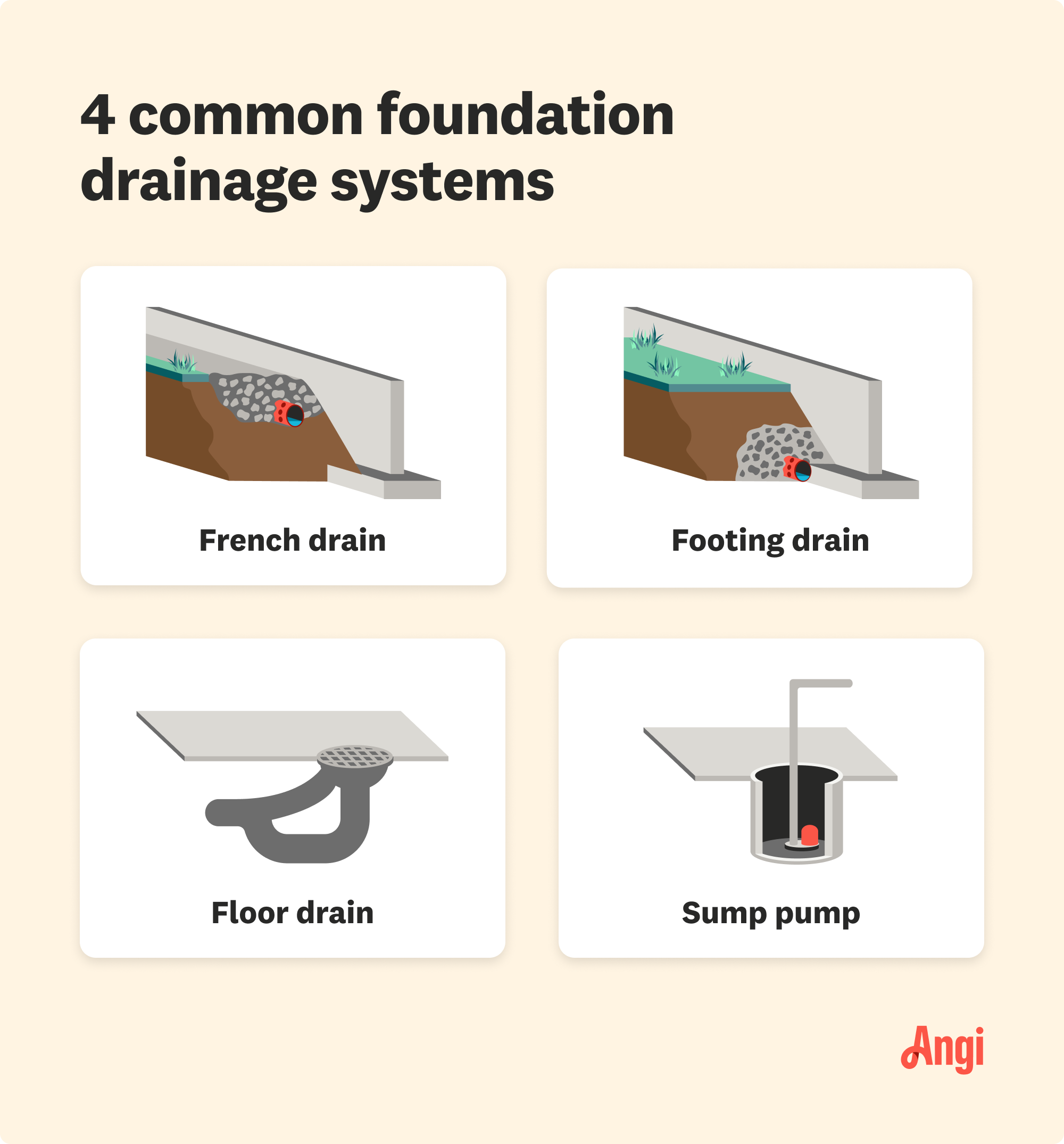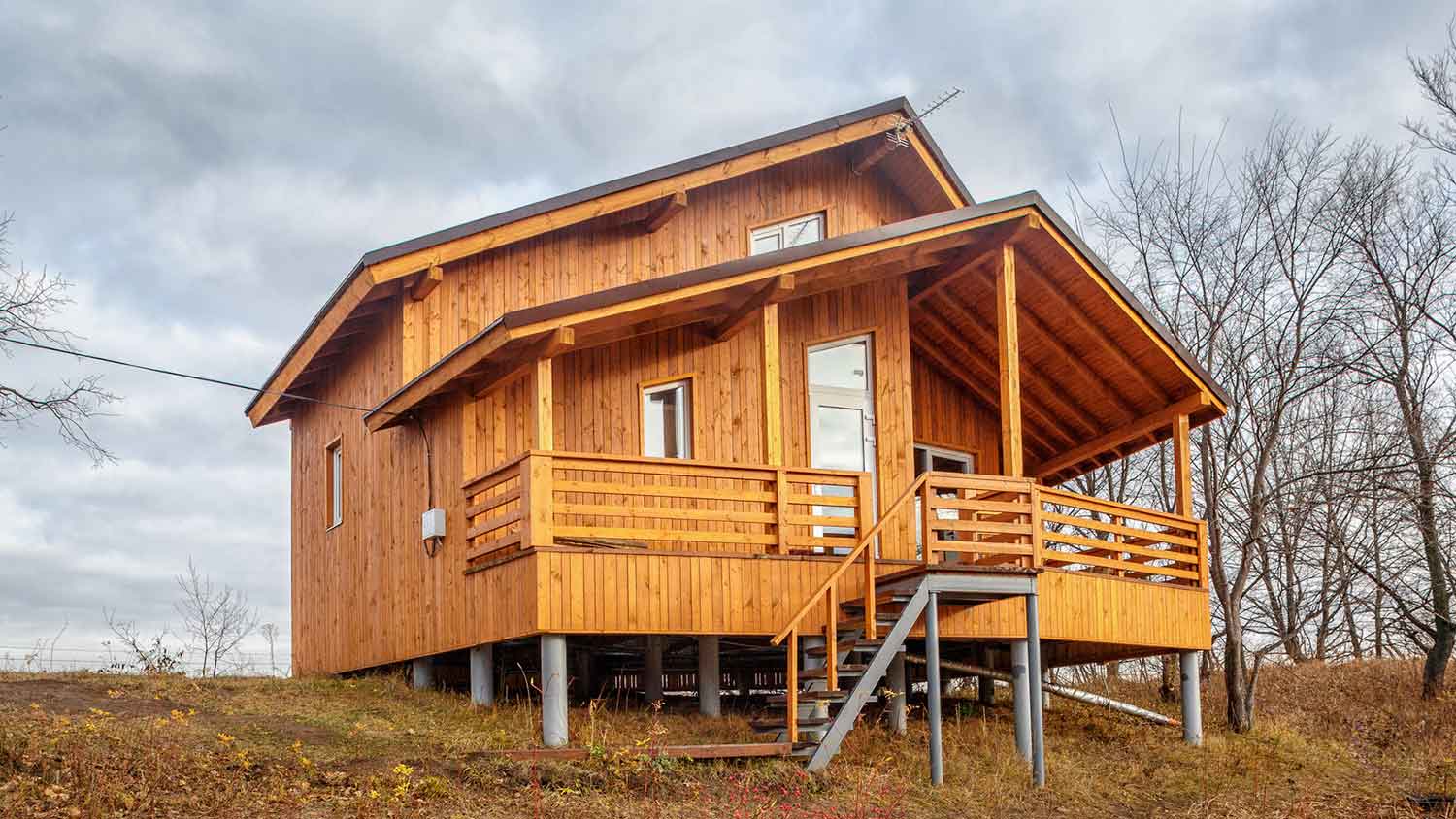12 Signs of Water Damage to Your Foundation
Find water and moisture problems quickly to minimize the damage and repair costs


Visible water or noticeable moisture under your home are the most obvious signs of a foundation leak.
Conduct a DIY foundation inspection once a year to find water damage early and get a fix in place right away.
It’s always a good idea to hire a professional to repair water damage to your foundation and treat the underlying problem to prevent ongoing issues.
Your home foundation is constantly exposed to the elements and serves as the first line of defense to keep moisture in the soil from entering your home and causing damage. Unfortunately, this leaves it prone to water and moisture intrusion, which can wreak havoc on the building materials under your home and in your living space.
In this guide, we’ll explain the signs of water damage to your foundation so that you can keep an eye out for issues and address them before they become severe.
Why Water Damage to Your Foundation Is Dangerous
Foundations are under immense stress from the weight of your home, the pressure of soil movement, and the elements, so even relatively minor problems can quickly worsen and leave you with major property damage. Foundation issues also threaten the structural integrity of your home and can lead to irreparable damage if left unresolved. You should take foundation problems very seriously and have a professional address or fix them immediately, even if they seem minor.
Address water damage as soon as it happens to prevent structural issues and mold growth. Hiring a pro for large leaks can save on more expensive repairs caused by prolonged water exposure.
Signs of Water Damage to Foundation

There are 12 things you should look out for in and around your home that can indicate water damage to your foundation. Keep in mind that some of these may only apply to certain types of foundations, so the foundation inspection checklist below might differ slightly for your property.
Water in your crawl space or basement
Humid air when you enter your crawl space or basement
White, powdery stains on the foundation walls
Ongoing issues with pests under your home
Cracks in your foundation
Puddles on the soil around your foundation
Visible mold or musty smells in your home
Unexplainable bumps in utility bills
Less comfortable air temperature inside
Foundation walls that bulge inward
Wood rot in your under-home area
Crumbling foundation walls or floors
Visible or Standing Water
The most obvious sign of water damage to your foundation is visible water in your crawl space or basement. You might see water trickling in through cracks in the concrete, which often indicates a drainage issue outside, or standing or pooling water on the basement floor, which suggests a problem with flooding, either from excess runoff or a broken water pipe.
Dampness Under Your Home
If you enter your crawl space or basement and feel heavy or damp air, that’s a likely sign that you’re dealing with a basement moisture issue. While this might not be as severe as standing water, it can lead to mold growth, damage to insulation and other building materials, and decreased indoor air quality in your living space, so it’s still a serious problem.
Efflorescence
Efflorescence is a powdery, white substance on the interior of your foundation walls. It’s made from minerals that get left behind after runoff wicks through the pores in your concrete wall and evaporates into your under-home area. You’re very likely to notice efflorescence alongside damp air in your crawl space or basement since the intruding water that leaves the minerals behind will end up evaporating into the air and increasing the humidity.
Pest Infestation
Insects and rodents are attracted to moisture, so problems with liquid water or water vapor under your home can often result in ongoing problems with pest infestation. You might notice insects like carpenter ants or termites in your home, or raccoons, mice, rats, and other animals living in your crawl space or basement as a result of increased moisture.
Foundation Cracks
All foundations crack from settling, so cracks aren’t always indicative of water damage to your foundation. However, cracks in the concrete can make it easier for water and water vapor to enter your home, so it’s a good idea to seal them to prevent problems. If you notice that the concrete around an existing crack is damp—particularly after heavy rain—you almost certainly have a budding water or moisture problem.
Pooling Water Around Your Home
During or after rainfall, be on the lookout for water pooling on top of the soil, specifically right next to your foundation. This can be a sign that you have clayey soil, which can expand against your foundation and increase the risk of water or vapor getting through the concrete and causing issues inside. It can also be a sign that the soil below the surface is fully saturated, which could mean a drainage problem.
Mold Growth or Musty Odors

When water or humid air sits in the space under your home, it promotes mold growth on the foundation walls and the underside of the flooring above. If you notice musty odors in your crawl space, basement, or living space, or you see visible mold growth under your home, it’s a clear sign that water is coming in and getting trapped.
Above-Average Heating and Cooling Bills
Moisture problems from foundation water damage can cause increased humidity in your living space, too. Humid air feels colder in the winter and hotter in the summer, which leads homeowners to demand more from their heating and cooling systems. If you notice that your heating and cooling bills are higher than normal without another explanation, moist air in your living space from a foundation leak could be the underlying problem.
Reduced Comfort in Your Living Space
For the same reasons, you might notice that your living space is less comfortable, even if you don’t resort to turning up the heat or AC. You might find that the temperature settings that once kept everyone comfortable no longer suffice, which could mean you have increased humidity resulting from a water problem with your foundation.
Bowing Foundation Walls
Soil expands when it gets saturated, especially if you live in an area with clayey soil. If the soil composition or poor drainage leads to soil expansion, it will put added inward pressure—called hydrostatic pressure—on your foundation walls.
With enough pressure, the walls will bow inward. If the inward movement is severe enough, you might even find horizontal cracks in the walls. These problems can both indicate a loss of structural integrity and demand emergency repairs.
Damaged Building Materials
Water and water vapor can damage building materials under your home over time, so you might find rotting wooden beams, posts, or floor joists, sagging insulation, or other water-related damages in your crawl space or basement due to water intrusion.
Spalling
Spalling is when the surface of concrete chips or flakes as a result of ongoing water intrusion or weathering, especially from acidic rainwater. If you find that the walls or top side of your concrete slab are suffering from spalling, you probably have water vapor wicking in through the foundation due to poor drainage outside.
How to Know You Need to Hire a Pro for Foundation Water Damage

Water damage to a foundation is a serious problem, even if it seems minor, especially because foundation issues worsen over time if you don’t treat the underlying problem. As such, you should always hire a professional at the first sign of a foundation leak or moisture problem.
In addition to a foundation repair contractor, you should address the root of the issue, which usually involves hiring a local foundation drain installation company to prevent the water from contacting your foundation in the first place. Having professionals tackle both the problem and the underlying issue is the best bet you have for avoiding ongoing water and water vapor problems.

Can I DIY Foundation Leak Repair?
In some cases, it’s possible to DIY repairs for minor foundation leaks. For example, suppose you carefully monitor the problem and find a small issue with water vapor under your home. In that case, you can grade the soil away from your foundation outside, install gutters and downspouts to help with drainage, and apply waterproofing paint to the inside of your foundation walls to limit ongoing damages and problems.
However, it’s almost always best to call in a professional foundation repair contractor. Diagnosing foundation water damage can be tricky, and if you don’t properly fix the underlying problem, you’ll likely face additional repair costs and more severe damages in the future.
How to Prevent Foundation Leaks
Foundation leak prevention is the best way to avoid water and moisture problems under your home, and there are a few key things you can do to help keep runoff away from the soil around your foundation:
Install gutters, downspouts, and downspout extenders
Grade soil away from your home at a slope of six to ten vertical inches over the first ten horizontal feet
Avoid planting trees, bushes, and other vegetation within two feet of your foundation
Replace old basement windows and doors that might be letting water in
Seal foundation cracks that are 1/8 inches or less in width, and have a contractor address any larger cracks
Keep drains in basement stairwells and window wells clear
How Much Does It Cost to Repair Foundation Water Damage?
The cost to repair foundation water damage varies widely depending on your underlying issue and the foundation repair methods needed to address them. On average, you can expect to pay around $6,000 for the repair and preventative measures for the future.
Simpler fixes like soil gradation and sealing small foundation cracks could cost between $200 and $1,000, while full-scale basement waterproofing costs around $10,000, on average, and can climb up to $20,000 in severe cases.
Frequently Asked Questions
Water damage to a foundation often starts as a slow leak or water vapor problem that worsens over the course of months or even years. The speed at which foundation leaks worsen depends on a few factors, including your climate and location, the soil composition around your home, the foundation drainage system you have in place, if any, and the type of foundation you have. Even if you have a minor issue that’s slow to develop, it’s best to have a professional address the issue immediately.
A leak under your foundation from a water supply line or sewage line is likely to lead to water pooling on certain areas of your property during rainfall, abnormally fast-growing or green grass in certain sections of your lawn, and differential settlement of your foundation, which can result in large foundation cracks, windows and doors failing to operate properly, a wavy or sloping roofline, or damages or irregularities in your interior walls, including cracks and bulging. If it’s a plumbing line embedded in your slab, you’ll also likely notice above-average water bills.
Depending on the severity, a slab leak can go undetected for months or even years, especially if you don’t carry out routine foundation inspections to find foundation leaks early. However, minor leaks are likely to turn into more severe leaks over time, so you might notice increases in water bills and issues with yard drainage, even if the problem is minor.
















